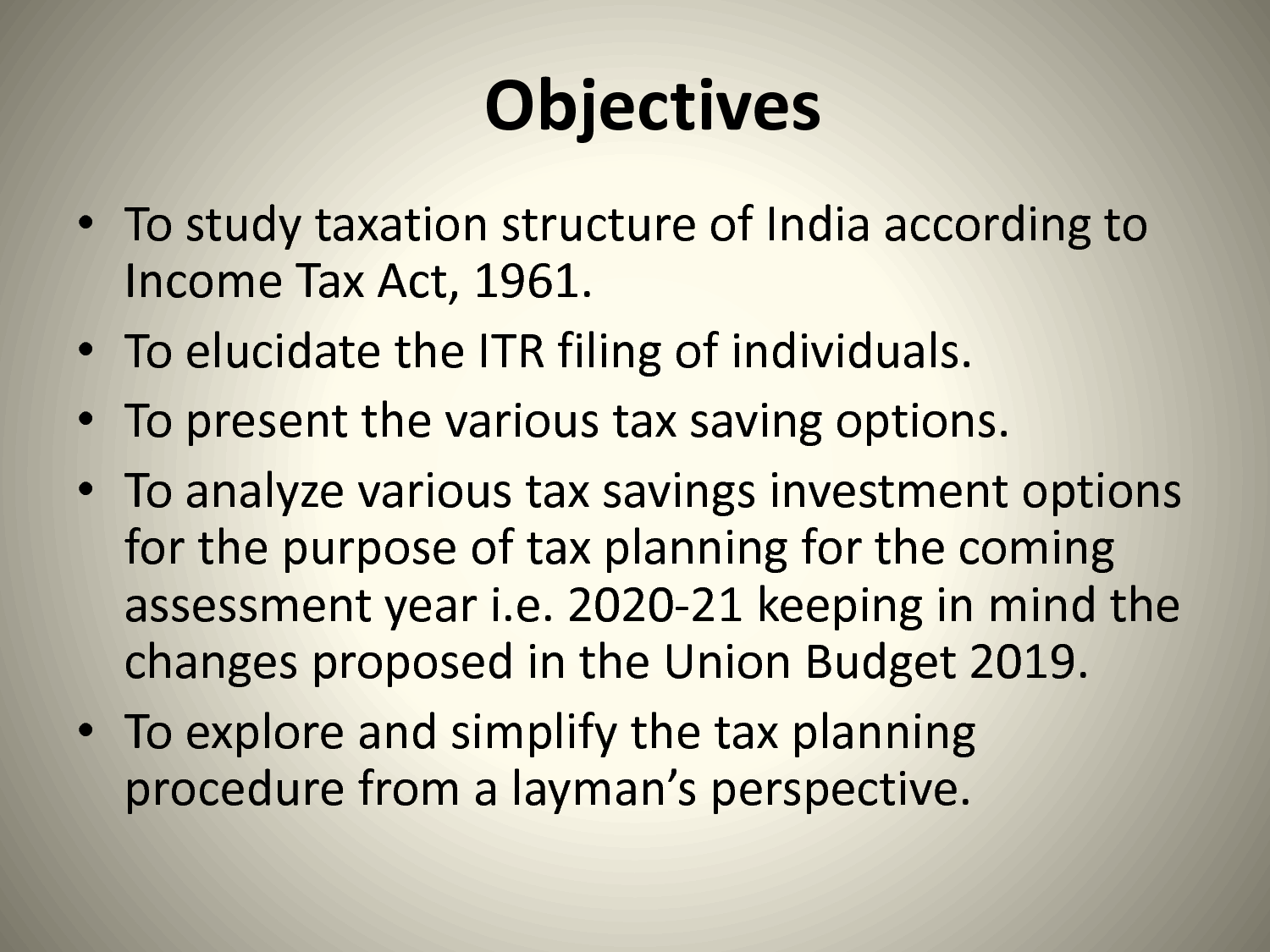

Finance
What Is A Planned Investment?
Published: October 18, 2023
Learn about planned investments and how they can help you achieve your financial goals. Explore the different aspects of finance and make informed decisions for a secure future.
(Many of the links in this article redirect to a specific reviewed product. Your purchase of these products through affiliate links helps to generate commission for LiveWell, at no extra cost. Learn more)
Table of Contents
Introduction
Welcome to the world of finance, where understanding the various investment strategies and options is crucial for building a secure financial future. One such strategy that plays a vital role in financial planning is planned investment. Whether you are an individual investor or a business owner, understanding what planned investment is and its significance can make a significant difference in achieving your financial goals.
Planned investment refers to the intentional allocation of funds with specific objectives and goals in mind. It involves carefully evaluating various investment opportunities and making informed decisions based on future projections and expected returns. This approach allows investors to have a systematic and well-thought-out plan in place, ensuring that their money is being put to optimal use.
So why is planned investment so important? Well, for starters, it helps individuals and businesses achieve their financial goals in a more organized and efficient manner. By having a clear plan and strategy in place, investors can align their investments with their long-term objectives, whether it be wealth accumulation, retirement planning, or funding a business venture.
Furthermore, planned investment helps mitigate risk and maximize returns. By conducting thorough research and analysis, investors can identify and select investment options that have the potential to yield higher returns while minimizing potential drawbacks. This allows them to make informed decisions that balance risk and reward, leading to more favorable outcomes.
There are several factors that can affect planned investments, such as economic conditions, market trends, interest rates, and government policies. These factors can influence the viability of different investment options and the expected returns. It is essential for investors to stay updated on these factors and adapt their investment strategies accordingly.
Definition of Planned Investment
Planned investment, also known as intentional investment or purposeful investment, refers to the process of allocating funds with a specific objective in mind. It involves carefully planning and strategizing investment decisions to achieve long-term financial goals. Unlike spontaneous or haphazard investments, planned investment takes into account various factors and considerations to ensure that the allocated funds are employed effectively and efficiently.
Planned investment is based on a proactive approach towards financial decision-making. It involves conducting thorough research, analyzing market trends, and evaluating potential risks and rewards. By doing so, investors can make informed choices about where to invest their money and how to allocate their resources in a manner that aligns with their financial objectives.
The primary aim of planned investment is to maximize returns while minimizing risk. By having a well-thought-out investment plan, investors can diversify their portfolio, spreading the risk across different asset classes and investment opportunities. This helps protect their investments from market volatility and allows for more stable and consistent returns over the long term.
Additionally, planned investment allows individuals and businesses to have a clear roadmap for achieving their financial goals. Whether it’s saving for retirement, purchasing a home, funding education, or expanding a business, having a defined plan helps ensure that the necessary funds are set aside and invested in a manner that aligns with the desired outcome.
It is important to note that the timeline for planned investment can vary depending on individual circumstances and goals. Some investments may have short-term objectives, such as generating income or taking advantage of market opportunities, while others may be more focused on long-term wealth accumulation and capital appreciation.
In summary, planned investment is a systematic and purposeful approach to allocating funds with the intention of achieving specific financial objectives. By carefully analyzing potential investment opportunities, considering market conditions, and balancing risk and reward, investors can make informed decisions that enhance their financial well-being.
Importance of Planned Investment
Planned investment plays a crucial role in financial success and wealth building. It provides individuals and businesses with a structured approach to managing their resources and achieving their financial goals. Here are some key reasons why planned investment is important:
- Goal Alignment: Planned investment allows individuals to align their investments with their long-term financial goals. Whether it’s saving for retirement, funding education, or purchasing a home, having a clear investment plan ensures that the necessary funds are allocated towards these objectives.
- Risk Management: Through careful analysis and diversification, planned investment helps manage risk. By spreading investments across various asset classes and investment opportunities, investors can minimize the impact of market volatility and potential losses.
- Maximizing Returns: Planned investment involves evaluating potential returns and selecting investment options that have the potential to generate higher profits. By conducting thorough research and analysis, investors can identify opportunities that align with their risk tolerance and maximize their returns.
- Staying Ahead of Inflation: Inflation erodes purchasing power over time. Planned investment takes into account the impact of inflation and aims to generate returns that outpace the rate of inflation. By investing strategically, individuals can preserve and grow their wealth over the long term.
- Financial Security: Planned investment provides a sense of security and peace of mind. By having a well-thought-out investment plan, individuals can build a financial safety net, ensuring they have the funds to weather unexpected expenses or economic downturns.
Moreover, planned investment fosters discipline and accountability in financial decision-making. It prevents impulsive or emotional investments and encourages individuals to make informed choices based on their financial goals and risk tolerance. This disciplined approach helps individuals stay focused on their long-term objectives and avoid unnecessary financial risks.
Furthermore, planned investment promotes financial growth and wealth accumulation. By consistently investing over a period of time, individuals can harness the power of compounding and generate significant returns. This approach enables individuals to build wealth and achieve financial independence over the long run.
It is worth noting that each individual’s financial situation and goals are unique, and the importance of planned investment may vary accordingly. However, for most people, planned investment offers a strategic and structured method for achieving financial success, mitigating risk, and building long-term wealth.
Factors Affecting Planned Investment
When it comes to planned investment, there are several factors that can influence and impact investment decisions. These factors can range from macroeconomic conditions to individual risk tolerance. Understanding these factors is essential for making informed investment choices. Here are some key factors that affect planned investment:
- Economic Conditions: The overall state of the economy, including factors such as GDP growth, inflation, and interest rates, can have a significant impact on planned investment. During periods of economic expansion, investors might be more willing to take on riskier investments, whereas during economic downturns, a conservative approach may be favored.
- Market Trends: Monitoring market trends and understanding market dynamics is crucial for planned investment. Paying attention to trends in specific industries or sectors can help investors identify potential investment opportunities and adjust their investment strategy accordingly.
- Government Policies: Government policies, such as tax regulations and monetary policies, can have a direct impact on the potential returns and risk associated with certain investments. Changes in tax rates or regulations can influence investment decisions and the expected profitability of investments.
- Industry and Company Analysis: Analyzing specific industries and companies can provide valuable insights for planned investment. Factors such as market competition, technological advancements, and a company’s financial performance can influence the investment potential and the level of risk associated with specific investments.
- Risk Tolerance: Understanding one’s risk tolerance is crucial when designing a planned investment strategy. Some individuals may be comfortable with higher-risk investments in pursuit of higher returns, while others may have a lower risk tolerance and prefer more conservative investment options.
- Investment Horizon: The investment horizon, or the length of time an investor plans to hold an investment, plays a significant role in planned investment. Different investment options may be suitable for short-term objectives versus long-term goals, and the investment horizon can affect the risk-reward trade-off.
- Financial Goals: Personal financial goals and objectives are important considerations in planned investment. Whether an individual’s primary goal is wealth accumulation, income generation, or capital preservation, these goals will shape the investment strategy and the types of investments chosen.
It is important to note that these factors are interrelated and can vary in their importance depending on individual circumstances. Additionally, external factors beyond an individual’s control, such as geopolitical events or natural disasters, can also impact planned investment decisions.
By carefully considering these factors and conducting thorough research and analysis, investors can make informed decisions and develop a planned investment strategy that aligns with their financial goals and risk tolerance.
Types of Planned Investments
Planned investments encompass a wide array of options that cater to different financial objectives, risk profiles, and investment horizons. Here are some common types of planned investments:
- Stocks: Investing in stocks involves purchasing shares of publicly traded companies. Stocks have the potential for significant capital appreciation over the long term, but they can also be volatile and carry higher risk.
- Bonds: Bonds are fixed-income securities issued by governments, municipalities, or corporations. Investing in bonds provides a fixed rate of interest payments over a specified period of time, making them suitable for more conservative investors seeking stable income streams.
- Mutual Funds: Mutual funds pool money from multiple investors to invest in a diversified portfolio of stocks, bonds, or other assets. They offer diversification and professional management, making them attractive to investors who want exposure to a variety of securities.
- Exchange-Traded Funds (ETFs): ETFs are similar to mutual funds but trade on stock exchanges like individual stocks. They offer diversification, ease of trading, and low expense ratios, making them popular among both individual and institutional investors.
- Real Estate: Investing in real estate involves purchasing properties or investing in real estate investment trusts (REITs). Real estate can generate rental income and appreciate in value over time, making it a popular long-term investment option.
- Precious Metals: Investing in precious metals like gold, silver, or platinum provides a tangible asset that can serve as a hedge against inflation and economic uncertainties. Precious metals have historically been seen as a store of value.
- Commodities: Investing in commodities involves trading physical goods like crude oil, natural gas, agricultural products, or precious metals. Commodity prices can be influenced by supply and demand dynamics, geopolitical factors, and global economic conditions.
- Retirement Accounts: Retirement accounts, such as individual retirement accounts (IRAs) and 401(k) plans, offer tax advantages and allow individuals to save and invest for retirement over the long term.
- Education Savings Accounts: Education savings accounts, such as 529 plans, allow individuals to save and invest for education expenses. These plans offer tax advantages and can be used for qualified educational expenses.
These are just a few examples of planned investment options available to investors. It’s important to note that each investment type has its own set of risks, potential returns, and suitability for different financial goals. It is essential for individuals to carefully consider their objectives, risk tolerance, and investment horizon when selecting the types of investments to include in their planned investment strategy.
Moreover, diversification is a key principle in planned investment. Spreading investments across different asset classes can help mitigate risk and optimize returns. It allows investors to benefit from the potential growth of different investment sectors while reducing exposure to a single investment or asset class.
It’s advisable to consult with a financial advisor or conduct thorough research before making any investment decisions to ensure that the chosen investment aligns with one’s financial goals and risk tolerance.
Advantages and Disadvantages of Planned Investments
Planned investments offer several advantages and benefits to individuals and businesses, but it’s important to also consider the potential drawbacks. Understanding the advantages and disadvantages can help investors make informed decisions about whether planned investments are suitable for their financial goals and risk tolerance.
Advantages of Planned Investments:
- Goal-oriented: Planned investments allow individuals to align their investment strategies with their specific financial goals, such as wealth accumulation, retirement planning, or funding a business venture. This focus on long-term objectives provides clarity and direction in financial decision-making.
- Diversification: Planned investments encourage diversification, which involves spreading investments across different asset classes and sectors. Diversification helps mitigate risk by reducing exposure to a single investment or asset, and it can maximize potential returns by capturing growth opportunities in various areas of the market.
- Risk Management: By conducting thorough research and analysis, planned investments enable investors to assess and manage risks effectively. Investment decisions can be made based on careful evaluation of potential returns, risk tolerance, and market conditions to create a balanced portfolio that aligns with the investor’s risk preferences.
- Maximizing Returns: Planned investments involve strategically selecting investment options that have the potential to generate higher returns. By evaluating various investment opportunities and considering market trends, investors can aim for optimal returns based on their financial goals and risk appetite.
- Wealth Accumulation: Through consistent and disciplined planned investments, individuals have the opportunity to accumulate wealth over time. By leveraging the power of compounding and adopting a long-term perspective, investors can generate substantial returns and build a solid financial foundation.
- Tax Efficiency: Planned investments often take into account tax implications, allowing individuals to optimize their investment returns by minimizing tax liabilities. By utilizing tax-advantaged accounts or implementing tax-efficient investment strategies, investors can enhance their after-tax returns.
Disadvantages of Planned Investments:
- Risk of Loss: Like any investment, planned investments carry a certain degree of risk. The value of investments can fluctuate, and it’s possible to experience losses, especially in more volatile asset classes. Investors must be prepared for potential downturns and understand that investment returns are not guaranteed.
- Market Uncertainty: Economic and market uncertainties can impact planned investments. Factors such as changes in interest rates, geopolitical events, or unexpected market conditions can influence investment performance. It’s important for investors to stay informed and have a long-term perspective to weather market fluctuations.
- Investment Costs: Planned investments may involve various costs, including brokerage fees, management fees, and transaction costs. These expenses can erode investment returns over time, so it’s essential to carefully consider and evaluate the costs associated with different investment options.
- Liquidity Constraints: Some planned investments, such as real estate or certain long-term investment vehicles, may have limited liquidity. This means that it may be challenging to access funds quickly or sell the investment when needed. It’s important to consider the liquidity needs and ensure that investment options align with short-term cash requirements.
- Market Timing: Successfully timing the market is challenging, and attempting to do so can be risky. While planned investments involve staying informed about market trends, trying to predict short-term market movements can lead to suboptimal investment decisions. Investors should focus on long-term strategies rather than trying to time the market.
It’s crucial for individuals to carefully evaluate the advantages and disadvantages of planned investments and consider their personal financial circumstances, goals, and risk tolerance before making investment decisions. Seeking guidance from a financial advisor can provide valuable insights and help individuals navigate the complexities of the investment landscape.
Examples of Planned Investments
Planned investments encompass a wide range of options that cater to different financial goals and risk tolerance levels. Here are a few examples of planned investments that individuals and businesses may consider:
- Retirement Accounts: Contributing to retirement accounts, such as 401(k) plans or individual retirement accounts (IRAs), is a popular form of planned investment. These accounts offer tax advantages and allow individuals to save and invest for their post-retirement years.
- Index Funds: Investing in index funds is a type of planned investment that offers broad market exposure. Index funds track a specific market index, such as the S&P 500, and aim to replicate its performance. This provides diversification and a low-cost investment option.
- Rental Properties: Purchasing residential or commercial real estate properties with the intention of generating rental income is a planned investment strategy. Rental properties can provide a steady stream of income and the potential for property value appreciation over time.
- Education Savings Plans: Setting up education savings plans, such as 529 plans, is a planned investment for funding future education expenses. These plans offer tax advantages and allow individuals to save and invest specifically for educational purposes.
- Stocks and Dividend-paying Investments: Investing in individual stocks or dividend-paying investments is a common planned investment approach. By carefully analyzing and selecting companies with solid financials and consistent dividend payouts, individuals can generate income and potentially benefit from capital appreciation.
- Government Bonds: Purchasing government bonds is a planned investment that offers fixed interest payments over a specified period. These bonds provide a relatively stable income stream and are considered lower risk compared to other investment options.
- Mutual Funds: Investing in mutual funds is a planned investment strategy that allows individuals to pool their money with other investors. Mutual funds offer diversification and professional management, making them suitable for individuals seeking a hands-off approach to investing.
- Business Expansion: Allocating funds towards expanding an existing business or starting a new venture is a planned investment for entrepreneurs. This strategic investment can support business growth and potentially yield higher returns in the form of increased revenue and profitability.
- Infrastructure Projects: Investing in infrastructure projects, such as renewable energy, transportation, or telecommunications, is a planned investment strategy. These types of investments can provide long-term returns and support the development of essential services and infrastructure.
These examples illustrate the diverse options available for planned investments. It’s important to note that each investment carries its own set of risks and potential rewards. Investors should carefully analyze their financial objectives, risk tolerance, and investment horizon before selecting specific investments for their planned investment strategy.
Moreover, seeking guidance from a financial advisor can offer valuable insights and help individuals make well-informed investment decisions that align with their unique financial circumstances and goals.
Conclusion
Planned investment is a crucial component of successful financial planning and wealth building. It provides individuals and businesses with a structured and strategic approach to managing their resources and achieving their long-term financial goals. By carefully evaluating investment options, considering market conditions, and diversifying their portfolios, investors can maximize returns while managing risk effectively.
The importance of planned investment cannot be overstated. It allows individuals to align their investments with their specific financial objectives, whether it’s saving for retirement, funding education, or growing a business. Planned investment also helps individuals stay ahead of inflation, preserve capital, and build financial security for the future.
However, it’s important to consider the factors that can impact planned investments, such as economic conditions, market trends, and individual risk tolerance. Additionally, it is essential to understand the advantages and disadvantages of planned investments, including the potential risks, costs, and liquidity constraints.
Examples of planned investments encompass a wide range of options, including retirement accounts, stock investments, real estate, and education savings plans. Each investment type offers its own set of advantages and considerations, and it’s crucial for individuals to select investments that align with their financial goals and risk tolerance levels.
In conclusion, by implementing a well-thought-out planned investment strategy, individuals and businesses can optimize their financial outcomes and work towards achieving their long-term goals. It is advisable to seek guidance from a financial advisor to navigate the complexities of investing and make informed decisions that suit individual circumstances. With careful planning and strategic investments, individuals can pave the way towards a prosperous and secure financial future.














